Over the last month one could not help but notice how the local fauna were battling with the heat and furnace-like winds, and more recently the smoke from the fires around the State.
Making sure our bird baths remained clean and had sufficient fresh water was almost a full-time job. During the heat of the day, numerous birds, and mammals such as possums visited, sometimes just to sit in the water.
While I have seen significant reductions in the number of insects that are normally around during the summer period, I thought it would be good to rejoice in a couple of those that have turned up.
These include some of our more robust beetles with which we celebrate Christmas. They come out of the ground from their larval stage with the warmer weather, although their numbers seem to be in decline compared to previous years.
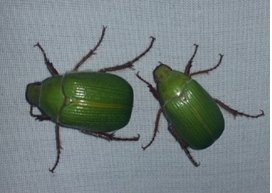 Eucalyptus Chafer Beetle Xylonichus eucalypti
Eucalyptus Chafer Beetle Xylonichus eucalypti
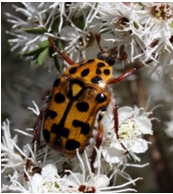 Punctate Flower Chafer Neorrhina punctatum
Punctate Flower Chafer Neorrhina punctatum
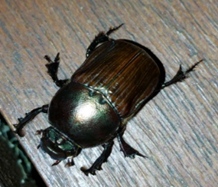 Scarab Beetle Dynistanae
Scarab Beetle Dynistanae
 Christmas Beetle Anoplognathus montanus
Christmas Beetle Anoplognathus montanus
There have also been these lovely Jewel beetles. While quite small at about 15mm, they can be seen on various flower blossoms around December. Most of the Jewel beetles are wood borers in the larval stage. Again, these beetles start to come out with the warmer weather.
 Ruby Jewel Beetle Buprestidae
Ruby Jewel Beetle Buprestidae
 Castiarina australasiae
Castiarina australasiae
 Diphucrania duodecimmaculata
Diphucrania duodecimmaculata
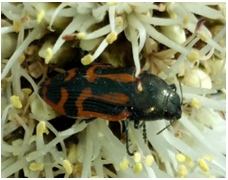 Castiarina scolaris
Castiarina scolaris
We have had some very interesting beetles come into the collection sheets recently, with a great variety of weevils seen in the reserves on our surveys.
 Horse Head Weevil Scotasmus parvicornis
Horse Head Weevil Scotasmus parvicornis
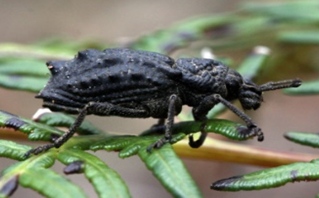 Grey Root Weevil Leptopius sp.
Grey Root Weevil Leptopius sp.
 Leaf Rolling Weevil Euops sp.
Leaf Rolling Weevil Euops sp.
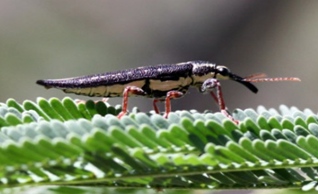 Belid Weevil
Belid Weevil
Over Christmas the Nankeen Kestrel family along the cliffs at Point Roadknight had a very successful season, raising three healthy fledglings.
 Nankeen Kestrel chicks waiting for next feed
Nankeen Kestrel chicks waiting for next feed
In the end I could only see one parent coming back to the eyrie typically every 10–15 minutes, bringing skinks and small rodents which were cleverly shared amongst the three ravenous chicks.
 Parent bringing in food and flying off
Parent bringing in food and flying off
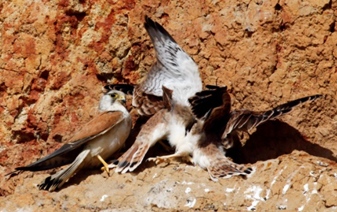 Chicks feeding
Chicks feeding
John Lenagan